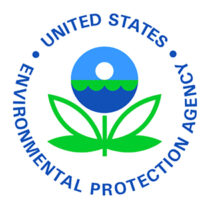WASHINGTON (April 12, 2022) – Following Clean Air Act requirements, EPA is proposing determinations for whether certain areas have met the 2008 or 2015 National Ambient Air Quality Standards (NAAQS) for ground-level ozone, or smog. EPA is proposing determinations regarding the air quality progress of seven nonattainment areas classified as “Serious†for the 2008 ozone NAAQS, while also proposing similar actions for 31 nonattainment areas classified as “Marginal†for the 2015 ozone NAAQS.  For areas not meeting the ozone standards, today’s proposals outline new timeframes and next steps for states to take to improve air quality. These proposals are based on a scientific evaluation of certified, publicly-available air quality monitoring data for the years 2018 – 2020.
“Smog pollution is a serious threat to public health, increasing the likelihood of respiratory infections, asthma attacks, and hospital visits,†said EPA Administrator Michael S. Regan. “With these proposed determinations, we are fulfilling our duty under the Clean Air Act to monitor air quality and work with states to help reduce pollution and protect the public we serve.â€
Ground-level ozone is not directly emitted to the air; it forms when pollutants emitted by cars, power plants, a wide range of industries, and other sources chemically react in sunlight. Ozone is most likely to reach unhealthy levels on hot sunny days in urban areas, but it can still reach high levels during colder months. It can also drift long distances and harm air quality in rural areas.
More than 79 million Americans, including those disproportionately burdened by ozone air pollution and other sources of pollution, live in areas that do not meet national air quality health standards for ground-level ozone, or smog. Today’s proposals are the latest in a series of actions EPA is taking to improve air quality and public health under the Clean Air Act. EPA recently proposed stronger standards to reduce pollution from heavy-duty vehicles and engines, and also proposed a federal plan to cut pollution from power plants and industrial sources that significantly contribute to unhealthy levels of smog for millions of Americans who live downwind.
EPA is required to undertake this rulemaking under the Clean Air Act to ensure that smog-affected areas expeditiously meet health-based air quality standards for ozone. For areas being reclassified – for example, from “Marginal†to “Moderate†or from “Serious†to “Severe†– the Clean Air Act requires that states implement additional measures to protect public health and to submit new plans to demonstrate how the area will attain as quickly as possible. Additionally, many areas across the country have had success with localized tools and approaches to improve ozone air quality. EPA will continue to work collaboratively with its state partners to ensure these measures are implemented to protect clean air for all communities.
Since the implementation of the Clean Air Act, the combined emissions of criteria and precursor pollutants have dropped by 78%, while our economy has grown more than 270%.
Key steps and background for these proposals:
For the 2008 NAAQS
- On March 27, 2008, EPA strengthened the level of the NAAQS for ozone from 0.08 parts per million (ppm) to a more protective 0.075 ppm.
- Effective on July 20, 2012, EPA designated 46 areas throughout the country as nonattainment for the 2008 ozone NAAQS, and the areas were classified as either Marginal, Moderate, Severe, or Extreme depending on the severity of each area’s ozone problems.
- Some of the Marginal areas did not attain the standard by the Marginal attainment date, July 20, 2015, and were reclassified to Moderate nonattainment.
- Similarly, some of the areas designated as Moderate or reclassified to Moderate did not attain by the Moderate area attainment date of July 20, 2018 and were reclassified to Serious nonattainment.
- Nine Serious areas were required to attain the standards by July 20, 2021. As required by section 181(b)(2) of the Clean Air Act, EPA is proposing next steps for seven of these areas in the proposed rule. EPA will be addressing the remaining two areas separately.
For the 2015 NAAQS
- On October 1, 2015, EPA strengthened the level of the NAAQS for ozone from 0.075 parts per million (ppm) to a more protective 0.070 ppm.
- Effective on August 3, 2018 (and for one other areas, September 24, 2018), EPA designated 52 areas throughout the country as nonattainment for the 2015 ozone NAAQS, and the areas were classified as either Marginal, Moderate, Serious, Severe, or Extreme depending on the severity of each area’s ozone problems.
- 39 Marginal areas were required to attain the standards by August 3, 2021. One area was required to attain by September 24, 2021. EPA is proposing to make determinations for 31 of these areas. EPA will be addressing the remaining nine areas separately.
EPA will accept comment on these two proposed actions for 60 days after publication in the Federal Register. EPA plans to hold a virtual public hearing for both proposals 25 days after publication in the Federal





